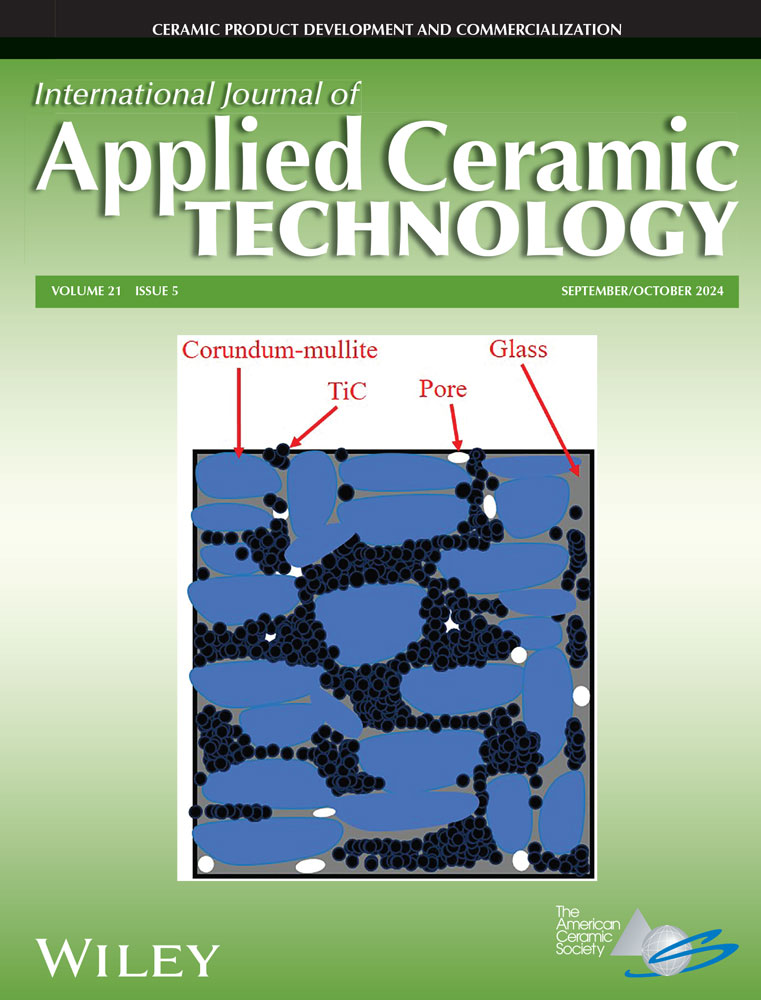光聚合悬浮液中粒子的沉降
IF 2.3
4区 材料科学
Q2 MATERIALS SCIENCE, CERAMICS
引用次数: 0
摘要
分析离心机用于研究耐火级二氧化硅颗粒在丙烯酸酯单体混合物中的浓缩悬浮液的沉降。显著稀释或有效颗粒剥蚀的深度取决于沉积时间,并与粒径分布、颗粒体积分数、液体粘度和触变性剂的存在有关。这些分散体的结果与Richardson-Zaki方程一致。讨论了光聚合悬浮液对三维打印的影响。用分析离心机检测了耐火级二氧化硅颗粒在丙烯酸酯单体混合物中的浓缩悬浮液的沉降,以确定稀释深度作为沉降时间的函数,并与颗粒大小、颗粒体积分数、液体粘度和触变剂的存在有关。结果与Richardson-Zaki方程一致。讨论了光聚合悬浮液对三维打印的影响。本文章由计算机程序翻译,如有差异,请以英文原文为准。


Sedimentation of particles in photopolymerizable suspensions
An analytical centrifuge was used to examine the sedimentation of concentrated suspensions of refractory-grade silica particles in acrylate monomer mixtures. Depths for significant dilution or effective particle denudation were determined as a function of sedimentation time, and related to particle size distribution, particle volume fraction, the viscosity of the liquid, and the presence of thixotropic agents. Results for these dispersions are consistent with the Richardson–Zaki equation for hindered settling. The implications on three-dimensional (3D) printing of photopolymerizable suspensions are discussed.
求助全文
通过发布文献求助,成功后即可免费获取论文全文。
去求助
来源期刊

International Journal of Applied Ceramic Technology
工程技术-材料科学:硅酸盐
CiteScore
3.90
自引率
9.50%
发文量
280
审稿时长
4.5 months
期刊介绍:
The International Journal of Applied Ceramic Technology publishes cutting edge applied research and development work focused on commercialization of engineered ceramics, products and processes. The publication also explores the barriers to commercialization, design and testing, environmental health issues, international standardization activities, databases, and cost models. Designed to get high quality information to end-users quickly, the peer process is led by an editorial board of experts from industry, government, and universities. Each issue focuses on a high-interest, high-impact topic plus includes a range of papers detailing applications of ceramics. Papers on all aspects of applied ceramics are welcome including those in the following areas:
Nanotechnology applications;
Ceramic Armor;
Ceramic and Technology for Energy Applications (e.g., Fuel Cells, Batteries, Solar, Thermoelectric, and HT Superconductors);
Ceramic Matrix Composites;
Functional Materials;
Thermal and Environmental Barrier Coatings;
Bioceramic Applications;
Green Manufacturing;
Ceramic Processing;
Glass Technology;
Fiber optics;
Ceramics in Environmental Applications;
Ceramics in Electronic, Photonic and Magnetic Applications;
 求助内容:
求助内容: 应助结果提醒方式:
应助结果提醒方式:


